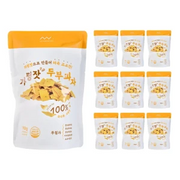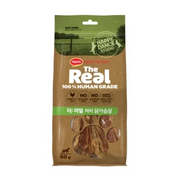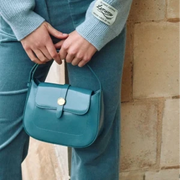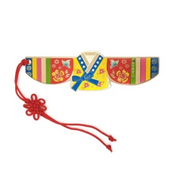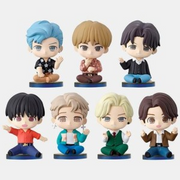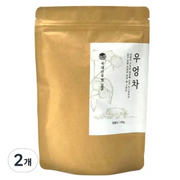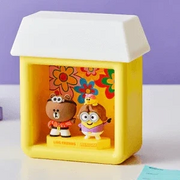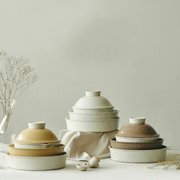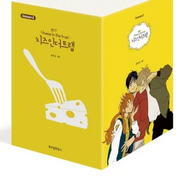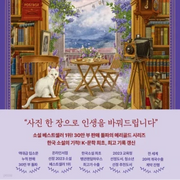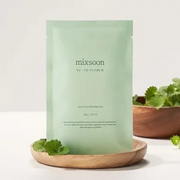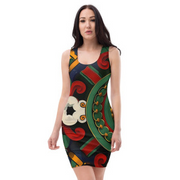PRODUCT DETAILS
Book introduction
Life history and customs of the Joseon Dynasty penetrated in one day! Luggage vendors lined up in front of the castle gate yawning at dawn, Yukjo Street in front of Gyeongbokgung Palace covered with all sorts of vehicles during rush hour, the sighs of Sungkyunkwan Confucian scholars living a suffocating life, crowded with traders bargaining using codes This is Jongno Sijeon Street, Mapo Wharf, where people gather for street performances by sadangpae, and gibangs in Bukchon who are treated badly if they are not polite! From the opening of the four main gates at dawn to the closing of the night, you can vividly experience the values, culture, art, food, and shelter of the Joseon people right in front of you!
Index
01 The bells of the bell tower open the four gates
Nice to meet you, Hanyang! | To the sound of bells in the bell tower, the four gates widen | Grand Gamma, who couldn't sleep at dawn
Kyujanggak Bridge, busy preparing for the first day of work | A school student who is sullen in the morning
02 The world's gourmand, Joseon people's breakfast table
Landscape of the main house with a relaxing energy | The grooming of a noblewoman who subtly follows the trend
A nobleman's daughter-in-law is having a hard time! | Nobi, moving hands and feet in and out of the house
What is the story of Nobi's age of 216? | The world's gourmand, Joseon people's breakfast table
03 Visit Yukjo Street, the administrative town of Joseon
Work scene of Yukjo street in Joseon's administrative town | Hanseong Panyun and Damo met in Hanseongbu
A horse neighing in the middle of the government office? | Joseon’s social media, a noisy laundry room
Middle school students going through a stormy period | A butcher's shop in the university district of Joseon. The hard life of Sungkyunkwan Confucian scholars | Confucian scholars in Hanyang receiving preferential treatment | Daunting days of Kyujanggak Gakshin|Kyujanggak Bridge that became a new ghost | The dream of a spring day, the king and his servants
04 Hanyang's spring viewed from the air
Floating in the air of Hanyang | Why do Gyeonghwasejok live in Clickbali’s neighborhood? | The new town of Hanyang, the scenery outside the castle
05 People I met at Unjongga, a hot place in Hanyang
Unjongga where people gather like clouds | Where is the trade without overkill? | old man floating
Various people walking on the street | The secret of the Bloody Road told by mutts | Hanyang's representative restaurant menu, janggukbap
The talkative Yakjureup I met at the Copper Dog Pharmacy | Street performance around Gaecheon
Vegetables at Baeogae Market, fish at Chilpae Market | The road to the revelry of Mapo Wharf
06 Daejeon Byeolgam, a fashionista who controls the spirit
All delicacies from the mountains and seas are gathered here | Gibang scenery that is unfamiliar yet familiar
Joseon's fashionista, Daejeon Byeolgam | Inwangsan Moonlight City Club
07 After the splendid party sponsored by the noble family,
Secret Dating in the Joseon Dynasty | Grand Gamma's refined taste | The sound of sighs coming from across the room
Novel fever blows into the living room | Did Joseon couples love each other?
08 The Long Journey to the Silent Night
Newborn of Haengnangchae | Approval sound announcing curfew | Hello Hanyang!
09 Send horses to foreign countries, send people to Hanyang
What kind of city was Hanyang, the capital of Joseon? | Bustling, bustling Hanyang where all kinds of goods are gathered
Noisily, Hanyang where all kinds of people gather | Hanyang is getting bigger and bigger
New and new, living in Hanyang gives you special benefits! | Hanyang, where Silhak and popular culture bloom
Send the horse abroad, send the man to Hanyang

Review of the editor
As if you were going on a little trip, get to know the history of Joseon!
When you go on a trip and tell about your experiences, what do people usually talk about? Most will tell you something like. "The meat I ate at the restaurant in front of the station really melted in my mouth. The boss of the restaurant is tall and has a bushy beard... ... ."
When you say 'travel', most people pay attention to things related to life and culture, such as whether the food is delicious, whether people are friendly, how they look and dress, whether the streets are clean, and whether public transportation is convenient. .
Unfortunately (?), Im not very interested in the significance of the cultural objects I see around me, or how old they are. Even if you listen to the explanations, you can quickly forget them. Even history textbooks are like a journey into an era. But who would be happy to learn about the size and significance of cultural assets while traveling?
In fact, humanities books are always serious for young people, because they cannot be free from learning. However, a trip that is too serious can quickly lose the interest of both adults and young people. "A Day in Joseon" is a historical and cultural book for visiting Hanyang, the capital of the Joseon Dynasty. However, it is a travel book for one day that can be taken with a light heart and a sense of walking.
When did the people who lived in Hanyang wake up, how did they use the toilet, what kind of rice and side dishes did they eat, how did the women put on makeup, where did they drink, etc. It is a practical travel book that has it all!
Of course, a trip to Hanyang cannot end with looking at the streets and gibangs in search of life at that time. If you look logically at why people lived the way they did, you can not help but look at the politics, economics, and society of the time.
For this reason, it is also necessary to stop and listen to explanations for a while at tourist attractions such as Changdeokgung Palace, Sungkyunkwan, and Namdaemun. However, since the purpose is to find the reason for a certain life, it is much easier and more interesting to approach the history of the Joseon Dynasty.
Unlike the rigid curriculum that focuses on political history and shows the compressed time for 500 years, the history tour in Hanyang for a day gives young readers a new experience of drawing the history of the entire Joseon Dynasty, starting from the gentle life history. will! Joseon's politics, economy, and culture were discovered in the lives of the people of Hanyang. This book covers a whole day from dawn to dawn of the next day, starting from the mountain. It is a historical travel book that gives a vivid and detailed account of the journey to Sungnyemun Gate.
The destination of the journey is a noble family in Namchon, Hanyang. Through the lives of Daegamma, the royal court secretary, the eldest son of Kyujanggak, the youngest son of a Confucian scholar, the lady of the house and the daughter-in-law, and about 100 slaves of the family, the life of the people in Hanyang and the appearance of every corner of Hanyang are shown. following them, you can feel the fun of learning about the small daily life, such as the eunuch who wears big shoes, the passport that allows you to move freely during the curfew, and the etiquette to follow when entering the kibang.
However, the visit to Hanyang does not end with looking around here and there.
They follow the nobles as they rush off to work in the morning, stopping in the streets of government offices to learn about the prevailing ideology and system of Joseon, enjoying food alongside the hostess and daughter-in-law who take care of the housework and reflecting on the values and traditions of the time. While they look around the streets with slaves doing all kinds of work,
I think about the contradictions of the class system of the time and the causes of the remarkable development of trade and industry.
Putting together the vivid Hanyang that you have seen with your eyes, heard from the people around you and tasted with your tongue, a big map of 'Joseon' is created in your mind, covering politics, economy, culture and art in detail. In addition, an information page has been included at the end of each chapter to provide useful information such as political changes, economic development, and scientific development that you need to know about the Joseon Dynasty at a glance.
As the story proceeds like a journey, it is intended to clearly point out the features of the Joseon Dynasty that may have been overlooked. The information pages are organically linked to the content of the main text and arranged in the order of middle school textbooks so that the Joseon Dynasty can be seen at a glance so that even young readers who are not familiar with the Joseon Dynasty can easily understand the progression of the story after the Japanese invasion of Korea in 1592. configured so that This morning is the 7th day of the year. The meal prepared by Chanmo is served by her daughter-in-law, Mr. Han.
It is a set table with rice, soup, stew, and soybean paste, plus 7 other side dishes. In addition, there are soy sauce, vinegar soy sauce, and red bell pepper paste, so everyone can add more according to their taste.
Oh, I am really curious about the taste! Although it is presumptuous, we taste it secretly without the landlady knowing. Seasoned fish from the north is not spicy.
Daegujeon is light because it is fried without much oil. ... (omitted) ... Why did you set the table so big in the morning?
During the Joseon Dynasty, people ate two meals a day. I ate another meal only in the summer when I worked a lot in agriculture. So it became a habit to eat a substantial breakfast. - Page 60, 〈Gourmets in the World, Joseon People's Breakfast Table〉 Over 200 years, the rediscovery of Seoul in Hanyang!
How can you easily understand the history of Hanyang, the capital of the Joseon Dynasty, compared to another city? Beijing in China? Kyoto in Japan? no! The quickest way to understand Hanyang is to compare it to Seoul today'. Hanyang was the capital of Joseon around 1700, which was experiencing its cultural heyday, and is similar to today's Seoul in many ways. Hanyang and Seoul even resemble each other like twins, for example, in terms of people flocking to them, in terms of being consuming cities that suck up supplies from outside like a black hole, and in terms of the benefits of being a capital city that receives preferential educational conditions.
Moreover, one can even experience that the appearance of the second middle school in Korea overlaps with that of the students of the school who diligently memorize "Sohak" to be admitted to Sungkyunkwan while attending the teacher' school in Hanyang!
If you live in Korea today, it is definitely easiest to compare ancient Hanyang with modern-day Seoul. Just like when we travel, the first thing we do is compare the place where we are currently living with a foreign city. In this regard, "A Day in Joseon" is not only easy to read, but also a book in which it is fun to compare different elements as if playing "Hidden Pictures" Comparing the natural environment, people, food, clothing, and shelter, as well as economic activities of Hanyang, the representative city of Joseon, with our present situation, we can find not only their values for a living but also similar problems as today, such as the 'Seoul concentration phenomenon' and 'educational problems'.
Young readers will go a step further and look at the history of the Joseon Dynasty from a 'different perspective'. Are the reasons why people flock to Hanyang in the late Joseon Dynasty and the reasons why people flock to Seoul in the 21st century surprisingly the same?
It seems that today's 'Seoul concentration phenomenon' began in Hanyang in the late 18th century. So far, we have visited Hanyang, the capital of the Joseon Dynasty, and unintentionally (?) compared it to today's Seoul in many ways. The natural environment, the people, the food, the clothing and housing, the economic activities, the hobbies, etc... ... .
The reason why Hanyang and Seoul seem to overlap strangely despite the time difference of more than 200 years is probably not just because they are silky places. Is it just my mood if I feel that the situation of the Confucian scholars from Hakdang who lived in Hanyang and that of our teenagers today are different? - On page 225, it says, "Send horses abroad, send people to Hanyang."
look at the real Hanyang through genre pictures from the Joseon Dynasty! In addition to school textbooks, picture illustrations in historical and cultural-historical books for children and teenagers usually have only an additional informational function.
As a result, looking at the pictures interferes with the flow of the text, and one sometimes has the feeling that one is playing with information written separately from the text. Since in many cases, the image is already explained in the text, the text and the image are naturally aligned, as if one is traveling and looking at the landscape.
To emphasize these qualities, not only are hundreds of old paintings spread out in a large format and cool size but also the information about the panels, such as the artist and collection location, is arranged separately in the back of the book so that the flow of the text is not hindered by the description of the image. I have tried to give as much consideration as possible to young readers.
Readers of this book will enjoy the pleasure of historical travel books with easy-to-read text and vivid pictures while enjoying the splendor of the wonderful paintings of ancient painters.
SHIPPING & RETURNS
Shipping and Delivery Information
Empress Korea is an authorized retailer and an official registered company in Korea.
- All parcels shipped by Empress Korea originate from Korea and are subject to international shipping guidelines.
- Delivery times typically range from 2 to 5 business days without 3 to 5 processing days when using FedEx or UPS, although some countries may experience longer delivery times depending on country-specific situations.
- Post office economy takes 8 to 16 business days, FedEx and UPS typically 2 to 5 business days to most countries after shipping started. For Empress Korea products, production begins after ordering, so it takes a week for the United States and 15 to 30 days for delivery to the rest of the world.
- Please note that delivery times may be affected by factors outside of our control, such as customs delays or local transportation issues.
- Additionally, please note that once the package has been shipped, we are not responsible for any delays caused by the shipping company.
- We recommend that you contact the shipping company directly for any inquiries related to your package's delivery status.
- Please note that certain countries or regions may not be eligible for shipping of specific items.
- When you add an item to your cart, the website will automatically notify you if the item can be shipped to your location.
- Kindly note that we are unable to deliver to P.O. Box, APO, FPO, or DPO addresses.
- Delays or customs duty charges. If your package is returned to us by your country customs, we do not issue any refund, and the package will not be reshipped.
- In case of change-of-mind returns, we don't accept refunds.
- Failed delivery due to an incorrect address and/or lost parcel due to handling of the recipient country's postal service will not be considered for a refund.
- empresskorea.com is not responsible for post parcels once it leaves Korea.
- In the event of a dispute, Empress Korea's decision shall be final and conclusive.
Collaboration works by top Korean designers
Discover unparalleled designs created by the finest designers of Korea, exclusively crafted on order for our own brand.
Recommended Products
Your Personalized Recommendations Await You
Most Viewed Items
Get Inspired by Our Most Viewed Products: See What Others are Buying


















